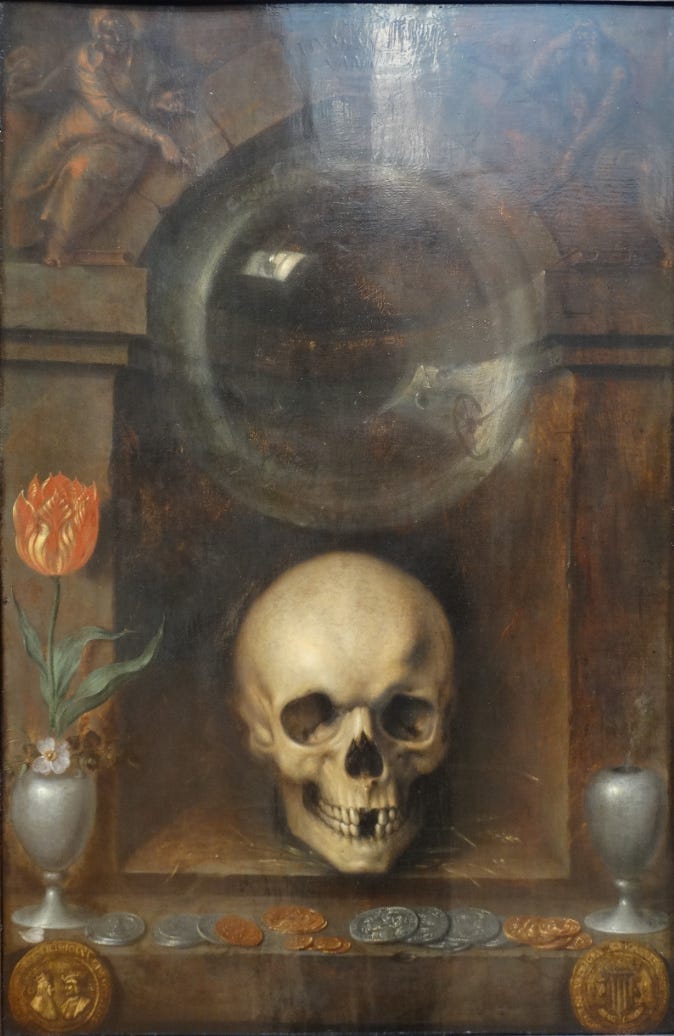First of all, this is the painting I mentioned last week, Vikki (Art in Brittany Student) made this some years ago as a class project. It is now in a private collection but she managed to get this photo for which I am very grateful.
This project required the participants to take a motif and create a painting in an 'ism' of their choosing. Vikki chose surrealism which brought it to mind.
'Each thing I do, I rush through so I can do something else.
In such a way do the days pass...'
Stephen Dobyns,1997,Pursuit.
Time and the control of it, is a contemporary obsession, from the quest for eternal youth to the idea of 'saving' time – just look at the huge amount of self-help books available on time management (imagine how long it would take to read them all!).
I'm not sure if it is a particularly British thing to complain about 'not having time'? Many of us have moved to France for a slower pace of life but somehow our 'to do' lists remain just as full! Retirees often remark that they are busier in retirement than in their former working lives! Our relationship with time often sets the mood for the day – we may feel good when we meet or exceed targets, guilt if we fail, upbeat if we got up early and glum if we overslept and missed part of the day. A complicated relationship with a mental construct! How does time impact on you?
We cannot leave the topic of time without a nod to the memento mori genre – in class this is a common reference point but for those less familiar....
Memento mori is a Latin phrase meaning "remember you must die." In art, it refers to works designed to remind viewers of their mortality and the fleeting nature of life. This theme has been explored across centuries, particularly in vanitas paintings, which often feature symbols like skulls, hourglasses, extinguished candles, and decaying fruit to emphasize life's impermanence.
The philosophy behind it is not necessarily morbid — it reminds us to live meaningfully, appreciating the present while acknowledging life's inevitable end.
Consider the popularity of memento mori references in fashion. Skulls and gothic images are a universal badge of defiance for the young – why do you think these motifs are so popular and how do you think attitudes to life and death have changed through the years?





